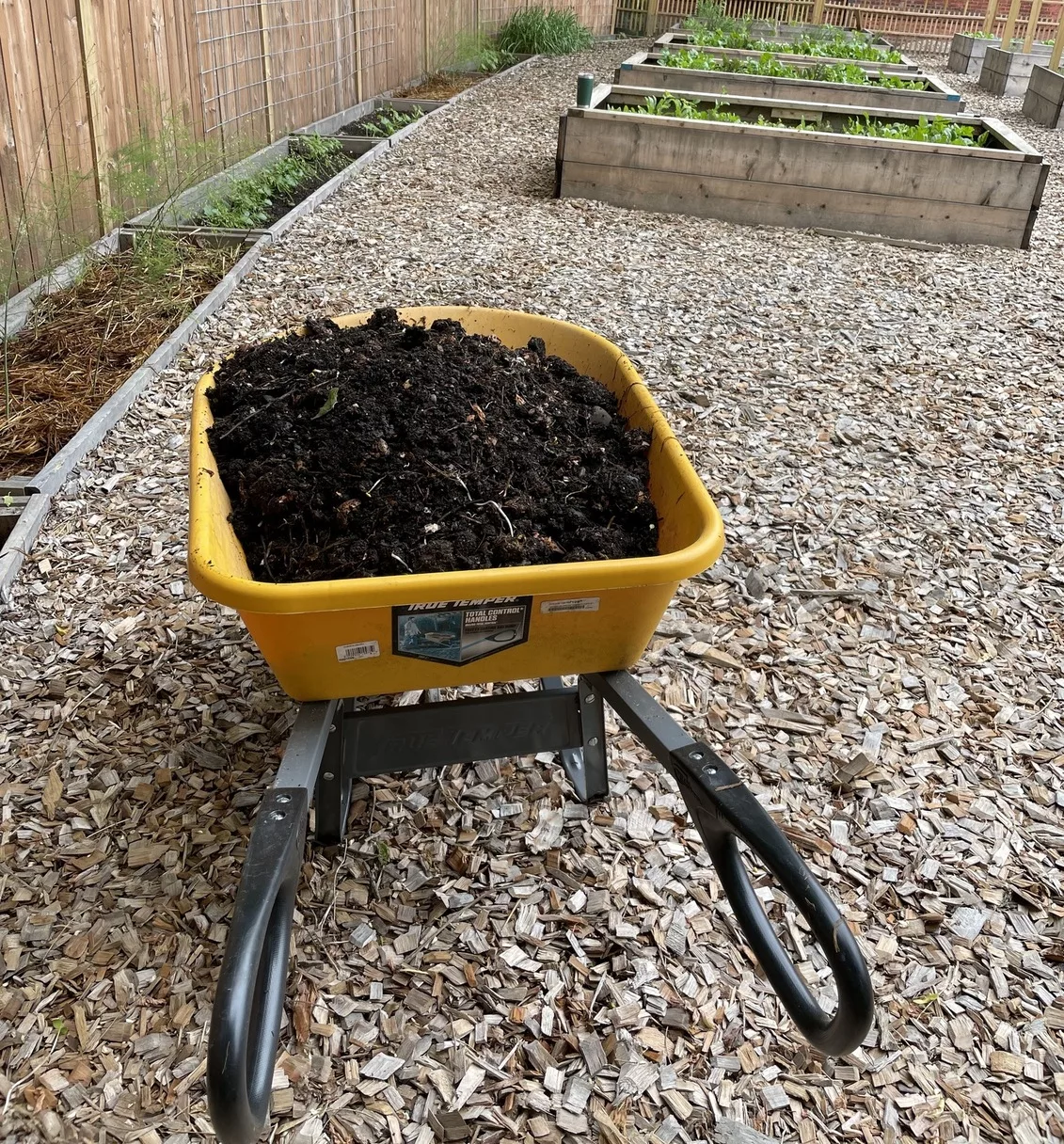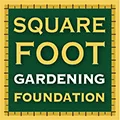
As one of the 3 main components to Mel’s Mix, compost is the one that you’ll need to add to your garden bed each year to keep things thriving. 🌱
If you’re new to Square Foot Gardening, you’ll want 1/3 of your gardening medium to be an organic blended compost (plus 1/3 coarse vermiculite and 1/3 peat moss). If you’ve already been using the Square Foot Gardening Method in prior growing seasons, simply add enough compost to achieve your desired soil level.
Remember…it’s the compost in your Mel’s Mix that gives plants all the nutrition they need. Fertilizer isn’t needed.
For many gardeners, heading to the nursery for compost is an easy option. If you’ve been considering composting at home, we recommend it! Here are easy steps to follow to make your own compost.
4 Steps of Making Compost
STEP 1
Mix
Use several types of organic matter for best results. The more you incorporate different ingredients, the more nutritious your compost will be! Larger quantities: dried grass clippings, leaves, veggie & fruit scraps, tea bags, shredded newspaper, straw, poultry manure. Limited quantities: corn cobs, shredded bark, pine needles, sawdust, coffee grounds.
STEP 2
Mash
Make those green and brown materials SMALL before adding them to your compost pile. Avoid the urge to just toss in large hunks of plant, veggie or fruit scraps. That way, you speed up nature’s process of breaking down organic material. Cantaloupe rinds? Chop ’em. ✂️Newspapers? Rip ’em.
STEP 3
Moisten
Water is critical to the composting process; keep an eye on your compost pile and add water as needed. You want it to feel like a damp, wrung out sponge. Remember, your compost should be not too wet, not too dry.
STEP 4
Move
Whether you spin it in a compost spinner or use a shovel or pitchfork to turn and blend your pile, you’ll speed up the decomposition process by moving your compost. This gets the outside material to the inside of the pile – where the heat is – which helps the breaking down of organic materials.
Composting DO’S & DON’TS
YES
Each item should be under 20 % of total by volume.
-
Eggshells (crushed)
-
Grass Clippings (dried)
-
Hay (including salt hay)
-
Leaves
-
Newspaper (shredded)
-
Old sod
-
Reject or spoiled garden produce
-
Stable or poultry manure
-
Straw
-
Tea bags
-
Vegetable and fruit peels
Limited Amounts
Each item should be under 10 percent of total by volume.
-
Coffee grounds
-
Corn cobs
-
Hedge trimmings
-
Peanut shells
-
Pine needles
-
Sawdust
-
Shredded bark
-
Shredded twigs
-
Wood shavings
NO
These items should not be added to a compost bin.
-
Bakery products
-
Cat or dog manure
-
Cheese
-
Dairy products
-
Diseased or pest-laden materials
-
Grease
-
Kitchen scraps
-
Meat or bones
-
Seeds and fruit pits
-
Whole eggs
What Different Compost Types to Use?
- 20% manure compost (for example: cow, chicken, rabbit, sheep, alpaca, guano)
- 20% mushroom or cotton burr compost
- 20% seafood industry compost (for example: lobster, seafood, seaweed)
- 20% worm castings
- 20% organic home compost (for example: yard waste, leaf compost, kitchen waste)
Discover the diverse world of composting options available to you, where your location plays a crucial role. Composts are predominantly produced and distributed regionally due to the cost constraints associated with shipping. It’s important to note that the quality of prepackaged compost can fluctuate significantly, both between regions and even from one batch to another. To ensure you get the best product, carefully read the package details, and consider opening one bag upon purchase. Be prepared to return it if the quality falls short of your expectations, as occasional variations can occur.
Bagged Compost, or Homemade?
The ideal choice is the compost you make in your own backyard, because you know what’s in it, where it came from, and that it’s organic.
The worst choice, by comparison, is what we call “single ingredient” bagged compost that you pick up at a home improvement store or garden center. Why is that?
Your goal when making Mel’s Mix is to use compost that has a variety of materials in it — 5 different ingredients is ideal, but 3 different ingredients is acceptable — to create “blended compost.”
Here’s a few watchouts about pre-made compost:
-
Be wary of free compost from parks and recreation departments. Too much wood is often in the mix, and it’s not screened for weeds.
-
Check how much peat moss is in the bagged compost you want to buy: Remember, there’s already 1/3 peat moss in Mel’s Mix and you don’t want to throw off the ratio of ingredients.
-
Non-organic ingredients: read that label! You’re looking for “OMRI” on the bag (Organic Materials Review Institute). A simple “organic” label is not the same thing.
DIY Composting FAQs with Wayne Schirner
Learning Videos
Featured Blogs
The Square Foot Gardening Method creates healthier gardens, larger harvests…and happier, more fulfilled gardeners!
